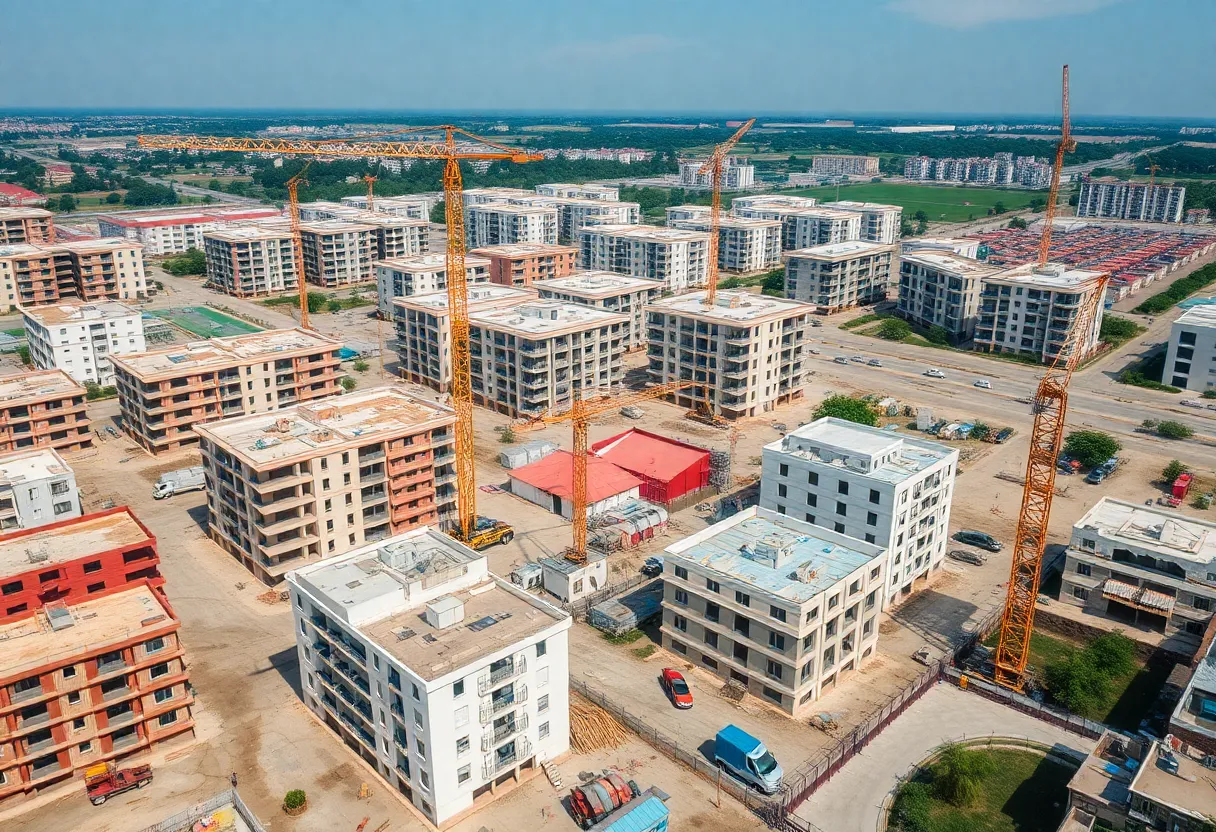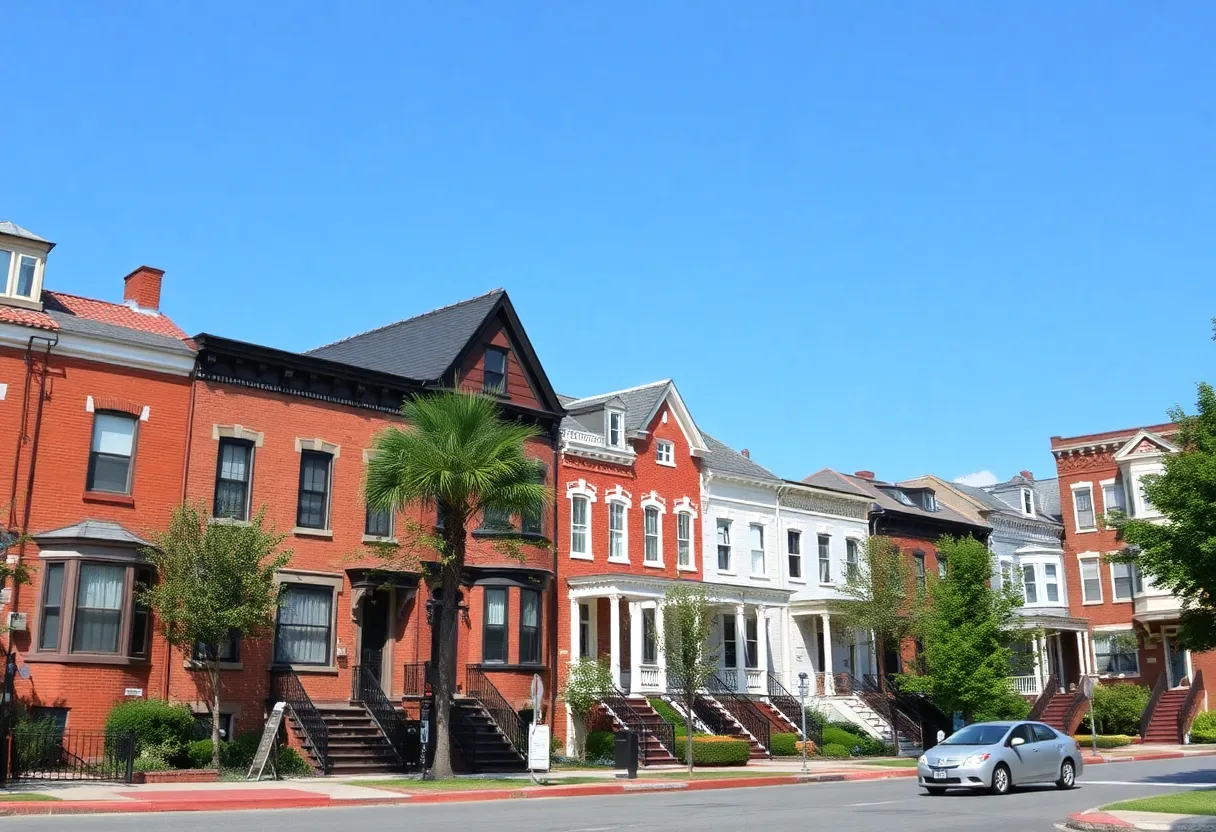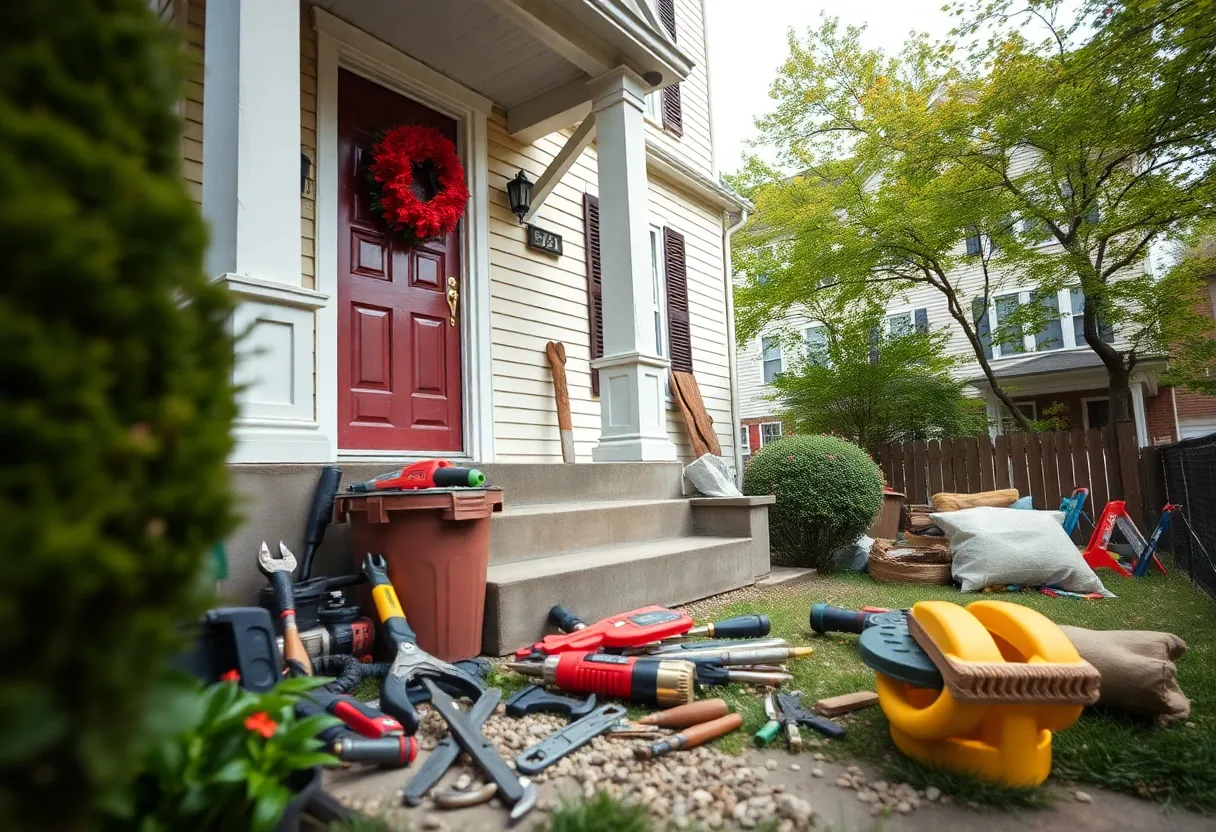News Summary
In a worrying trend, construction starts dropped notably in July, with total starts falling by 10.2%. Nonresidential building projects saw a substantial 30.1% decline, while residential construction also faced a 3.1% drop. However, nonbuilding construction managed to grow by 20.4%. Year-to-date statistics show a mixed performance across sectors with nonresidential starts up 4.3%, but residential starts down 4.4%. The report highlights major projects launched and regional trends indicating varying performances across the U.S. construction industry.
City: New York
In July 2025, total construction starts witnessed a significant drop of 10.2%, reaching a seasonally adjusted annual rate of $1.19 trillion. Particularly alarming was the plunge in nonresidential building starts, which fell by 30.1% during the same month. In contrast, nonbuilding construction projects saw robust growth, increasing by 20.4%.
The downturn in the construction sector extended to residential projects, which also experienced a decline of 3.1% in July. Despite these setbacks, year-to-date (YTD) figures indicate that total construction starts are marginally up 1.6% compared to 2024.
Year-to-Date Performance
For the year thus far, nonresidential starts have risen by 4.3%, whereas residential starts have dropped by 4.4%. Conversely, nonbuilding starts have shown a stronger performance with an increase of 5.3%. Comparing the full year ending July 2025 to the same timeframe last year, total construction starts improved by 4.1%. This growth is primarily attributed to nonresidential projects, which rose by 4.6%, while residential starts saw only a slight decrease of 0.7%.
Highlights of Nonbuilding Projects
In July, nonbuilding construction reached an annual rate of $395 billion, driven by substantial projects in utility and miscellaneous sectors. Utility projects surged month-over-month by an impressive 127.2%, while miscellaneous nonbuilding projects grew by 50.0%. However, highway and bridge starts fell by 2.5%, and environmental public works projects saw a decline of 17.7%.
Major Nonbuilding Projects Launched
Some of the major nonbuilding projects that commenced in July include:
- Empire Wind Offshore Wind Energy Project in New York – $3.0 billion
- A’s Ballpark in Las Vegas, Nevada – $1.8 billion
- Boardman to Hemingway Power Transmission Line in Boardman, Oregon – $1.6 billion
Decline in Nonresidential Building Starts
The nonresidential building sector faced significant challenges, with starts dropping to an annual rate of $443 billion. Commercial starts alone decreased by 8.5%, as office starts returned to levels comparable to the 2024 average, reflecting a substantial 33.1% month-over-month reduction. Institutional starts were also down by 4.6%, particularly in the education sector, which fell by 13.3%. Manufacturing starts suffered a dramatic decrease of 84.7%.
YTD Nonresidential Building Performance
Year-to-date statistics for nonresidential construction indicate that overall starts are up 4.3% compared to the previous year, with commercial and industrial starts increasing by 5.5% and institutional starts rising by 3.0%. Over the past year, nonresidential projects have demonstrated a 4.6% increase.
Key Nonresidential Building Projects Initiated
Some of the largest nonresidential projects that started in July were:
- UU West Valley Eccles Health Campus in West Valley City, Utah – $855 million
- Mercy Hospital Campus in Wentzville, Missouri – $650 million
- Meta Data Center Campus in Bowling Green, Ohio – $550 million
Residential Construction Overview
Residential building starts decreased to an annual rate of $356 billion, with single-family starts up marginally by 1.2%, while multifamily starts dropped significantly by 9.5%. Looking at year-to-date statistics, residential starts are down 4.4%, with single-family starts dropping by 10.1% and multifamily starts experiencing an increase of 8.3%.
Largest Multifamily Projects Launched
Key multifamily projects that broke ground in July include:
- Rangel Houses Comprehensive Repair/Renovation in New York – $552 million
- 20 Long Slip Apartment Tower-Pool in Jersey City, New Jersey – $365 million
Regional Trends
Regionally, construction starts in July showed an upward trend in the Northeast, while declines were noted in the Midwest, West, South Central, and South Atlantic regions. This complex picture underscores both the challenges and the potential areas of growth within the U.S. construction industry for the coming months.
Deeper Dive: News & Info About This Topic
HERE Resources
Deep Ellum Businesses Struggle Amid Ongoing Construction
Pueblo Residential Real Estate Market Experiences Decline
Chatham County Home Prices Decline Amid Disney Development
Additional Resources
- Construction Starts Remained Flat in February
- Wikipedia: Construction
- Construction on Historic Redevelopment of Mary Ellen McCormack Housing Complex
- Google Search: Mary Ellen McCormack Housing Complex
- AHSC Starts Construction on Boston Affordable Project
- Google Scholar: Boston Affordable Construction
- Construction Starts on Crescent Towing and Boston Towing Newbuilds
- Encyclopedia Britannica: Towing
- Construction Begins on Turning Empty Office Space into Residential Units
- Google News: Office Space to Residential Construction
Author: STAFF HERE BALTIMORE WRITER
The BALTIMORE STAFF WRITER represents the experienced team at HEREBaltimore.com, your go-to source for actionable local news and information in Baltimore, Baltimore County, and beyond. Specializing in "news you can use," we cover essential topics like product reviews for personal and business needs, local business directories, politics, real estate trends, neighborhood insights, and state news affecting the area—with deep expertise drawn from years of dedicated reporting and strong community input, including local press releases and business updates. We deliver top reporting on high-value events such as the Baltimore Book Festival, Preakness Stakes, and Artscape. Our coverage extends to key organizations like the Baltimore Chamber of Commerce and Visit Baltimore, plus leading businesses in shipping and healthcare that power the local economy such as the Port of Baltimore and Johns Hopkins Medicine. As part of the broader HERE network, we provide comprehensive, credible insights into Maryland's dynamic landscape.





